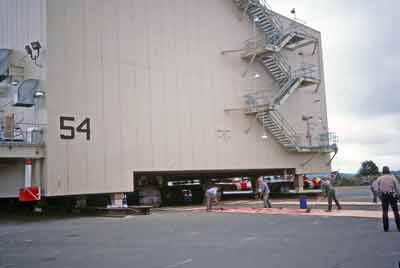 Getting ready to load the power plant module onto one of the barges. Plywood was laid down and was being greased so that the crawler transporters could move and turn easily. Fluor had used this crawler transporter design for the earlier modules I'd worked on at Prudhoe Bay instead of the more common multi-rubber-tired transporters I've encountered more recently. |
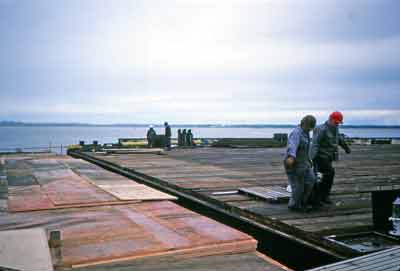 Plywood installed to level things up at the barge. The tide level changed rather quickly, so the modules could only be loaded at certain times, and the barge had to be constantly ballasted by pumping seawater in and out to keep it level with the pier. |
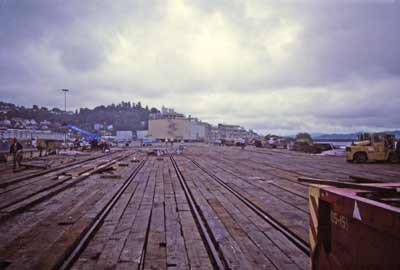 I'm standing on the barge looking back at the power plant module. Looks like these barges had been used to move rail cars at some point. |
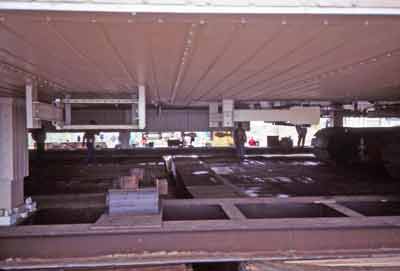 Looking under the power plant module as it is on the move. The frame in the foreground locks in the stub columns that will be set on the foundation columns on the Slope. |
|
Side note, earlier on the Fluor PWX-2 project on the Sohio (BP) west side of the North Slope, I was presented with x-y-z as-built survey drawings of the locations of the stub columns for each module as well as as-built drawings of its foundation columns (which had been installed in drilled holes during the previous winter and frozen into place with sand slurry). It was my job to determine the thickness of the shim pack to be placed on each column and to mark the horizontal positions on the module stub columns and the foundation columns. I then got to stand underneath as each module as it was positioned, radio the transporter driver to "move it north one inch" and then point down to signal to lower the module onto its columns. The columns were then locked together with bolted and welded stops.
|
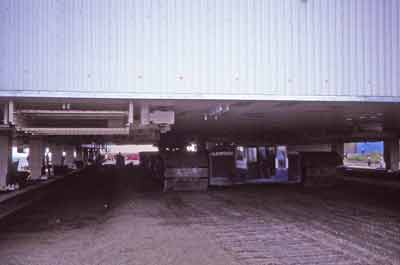 In this view I'm walking behind the moving module. The racks at left will support cable tray. |
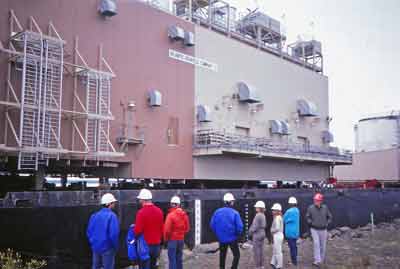 Folks are having a look at the power plant module loaded onto the barge. |
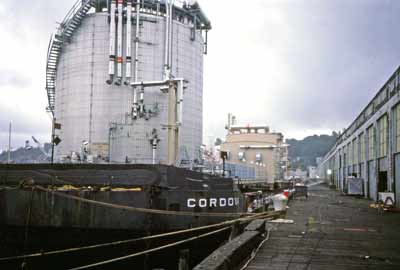 Some of the other modules loaded on other barges. |
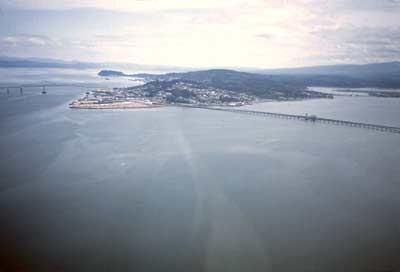 After loadout, one of the engineers I was working with took me flying in his private plane. Here we are looking east at the empty fabrication yard. |
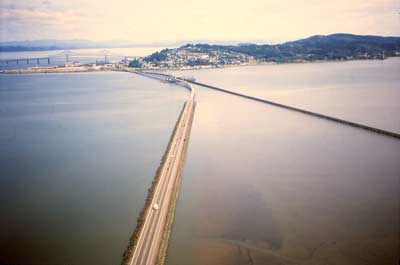 A bit further south, here (at left) is the New Young's Bay Bridge (and causeway) which carries US 101 across Young's Bay. It was built in 1964 and significantly upgraded in 2007-09. At right is the railroad bridge/causeway, part of several early railroads and ultimately Burlington Northern, running to Seaside. The Seaside section was abandoned in the 70s and the bridge was removed in the late 80s, although some of the project equipment was delivered to Astoria by rail. Some of the tracks in Astoria are now used for a tourist trolley during the summer months. |
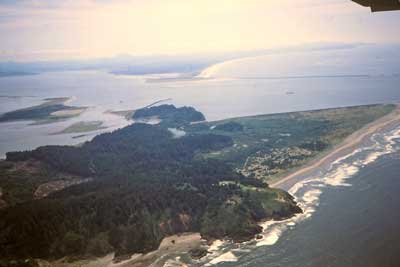 In this view we are looking south from the Washington side of the Columbia River. Cape Disappointment is at right, and beyond that the infamous Columbia River Bar. |
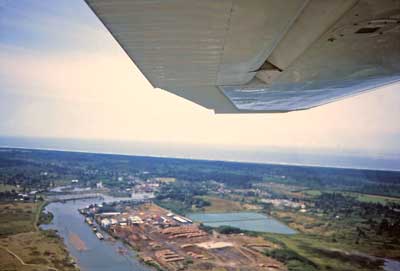 Back on the Oregon side, we're looking southeast up the Skipanon River at the town of Warrenton. The Skipanon River dumps into the mouth of the Columbia directly west of Astoria and southeast of Fort Stevens State Park. |
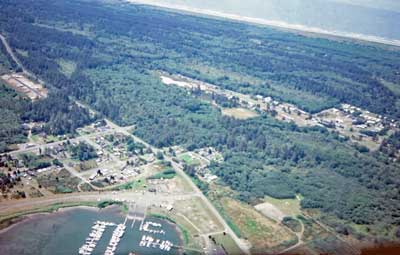 Last but not least, we're looking southwest from above the Columbia River...the small boat basin in the foreground is the Hammond Boat Marina in Warrenton (thanks for the identification from David White). |
|
At this point in time the oil business was in decline, and after Fluor laid me off at the end of the project, there didn't seem to be any immediate future with them. So...I contacted Art Brown, my former supervisor in 1978 when he was the ITT site manager at the BMEWS Thule radar site. In 1986 he was a manager with ITT Antarctic Services. I asked him if there might be a job. His reply...the ozone hole had just been discovered and NSF had given them a bunch more money to support things. So by October I found myself in Paramus, New Jersey...and at Palmer Station.
|